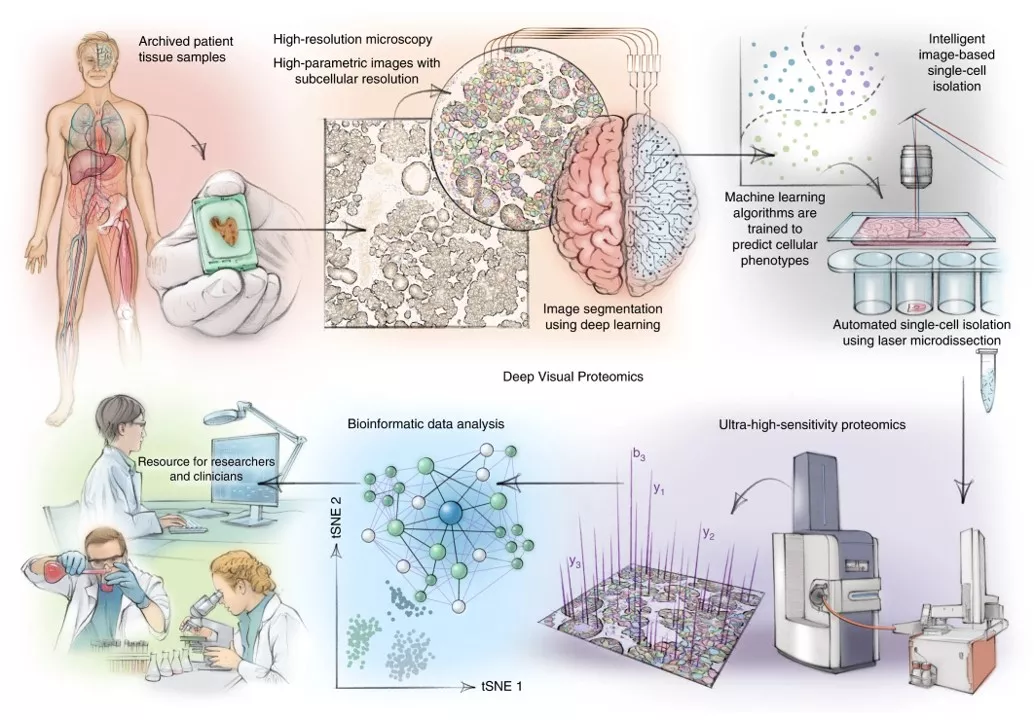Recently, Péter Horváth, a researcher at the HUN-REN Biological Research Centre, Szeged, was elected as a member of Academia Europaea in recognition of his outstanding scientific achievements in the field of artificial intelligence-based single-cell image processing. We spoke with him on the occasion of his appointment.
- What does this appointment mean to you and for your research institute?
- I am deeply honoured by this recognition. Although I don't conduct research with the aim of becoming a member of Academia Europaea, this honour is a true recognition of our work. Of course, it's also a great prestige to be part of such an esteemed organisation.
- What are you currently working on?
In a broader context, our goal is to understand diseases at the cellular level. Cancer, for example, is particularly challenging because it often manifests differently in each individual. I am always interested in whether we can understand these diseases on an individual basis and, as a mathematician, whether I can contribute to doing this better using bioinformatics and AI tools. To this end, we are developing methods to determine the genetic content of a single cell. For example, we use a microscope to select one cell out of ten million, break it down into its molecules, and then try to understand what makes that particular disease different from others and how it can be treated most effectively. Specifically for cancer, we are creating methods to precisely identify the drugs or drug combinations needed to tailor treatment to individual patients.

Source: HUN-REN BRC
- How reliable is artificial intelligence in this field? How well can it detect inaccuracies?
- In medicine, some things are very precise, while others are not. About 6-7 years ago, the first study showed that an AI-based method outperformed dermatologists in detecting melanoma. This trend has continued, and AI is only getting better. While doctors might see around 10,000 cases in their lifetime, these machines can be fed millions of cases from around the world. For example, with their help, we can tell with 95% accuracy whether a cell is lung cancerous or provide precise recommendations for medications for leukaemia patients.
- How and why did you become a bioinformatician and what made you choose this career path?
I initially studied computer science, followed by electrical engineering and mathematics, and completed my PhD in satellite image processing within the engineering field. After further studies in France, I moved to Switzerland, where I began working with biological images. It turned out that the tasks were quite similar to those in satellite imagery: whereas we previously identified roads, buildings, and trees, we now focused on cells, filaments, and blood vessels. We were able to apply satellite image processing methods almost directly to biological images, which I found incredibly fascinating. Over nearly eight years in Switzerland, I developed a deep passion for biological image analysis, leading me to focus my research in this area. I established research groups in Finland and at the Biological Research Centre, Szeged in Hungary, where we worked primarily with AI-based systems. Most recently, I started a research group at a Munich institute last autumn, where we are now dedicated exclusively to developing deep learning methods for health preservation and disease treatment. I believe I will grow old in this profession.

- What are your future goals in this field?
- My long-term goal is to develop highly precise, personalised cancer therapies and make them accessible to everyone. In the coming years, I aim to make available to everyone the methods that will enable us to provide personalised therapies for terminally ill patients.
A second goal of mine is to become more actively involved in science policy by updating the outdated research hierarchies and systems in my broader environment. After nearly 20 years of working abroad, I’ve seen what works elsewhere, and with 15 years of experience in Hungary, I understand what could be effective here. By combining these insights, I aim to reform the research projects, groups, and institutes under my responsibility to maximise research efficiency. In the coming years, I plan to devote considerable energy to elevating Hungarian research to new heights.